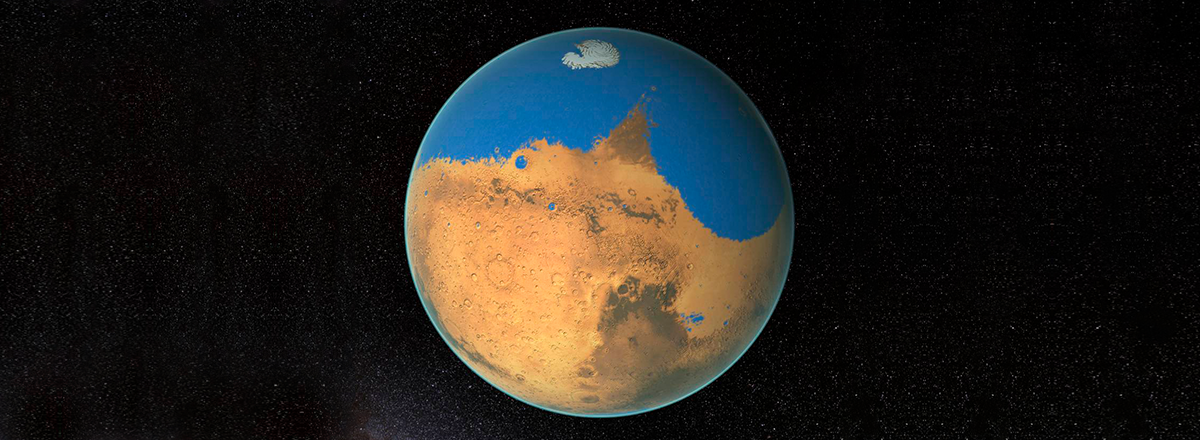Astronomers Discover Traces of an Ancient Ocean on Mars
Scientists from Pennsylvania State University have found evidence that about 3.5 billion years ago, Mars had a vast ocean, which covered hundreds of thousands of square kilometers of the planet. Its existence was indicated by the topography of the shoreline.

Scientists from Pennsylvania State University have found traces of a roughly 3.5-billion-year-old shoreline on Mars at the site of a vast ancient ocean. The results were published in the Journal of Geophysical Research: Planets.
According to researchers, this discovery indicates that the Red Planet once had an ocean – its shape was revealed thanks to the recently released set of topography maps of the surface of Mars. Researchers mapped out more than 6,500 kilometers of fluvial ridges on Mars and grouped them into 20 systems to show that these ridges are most likely eroded deltas of former Martian rivers or submarine-channel belts, the remnants of an ancient Martian shoreline.
The findings indicate that the ocean level on Mars was once rising, meaning that there was a warm and wet climate. Lead author of the study, Benjamin Cardenas, also notes that the existence of an ocean of this size means a higher potential for life.
"Based on these findings, we know there had to have been a period when it was warm enough and the atmosphere was thick enough to support this much liquid water at one time," Cardenas also added.
In the study, scientists used data collected by the Mars Reconnaissance Orbiter in 2007. Researchers analyzed the thickness, angles, and locations of the ridges. This helped them trace the history of the region they were investigating: the topographical depression known as the Aeolis Dorsa region on Mars.

